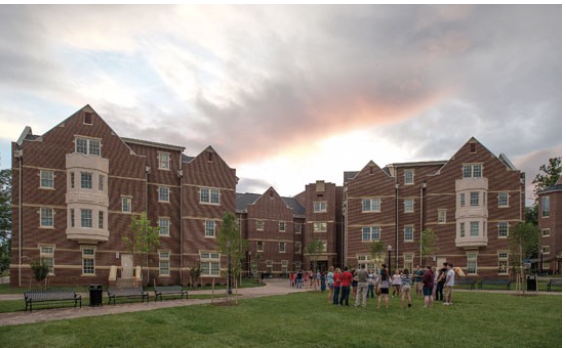Individual Comfort Controls
New ResidentialWhat are Individual Comfort Controls?
Individual comfort controls allow residents to control airflow and temperature in individual rooms or a specific section of the house or residential building. Individual comfort levels vary due to differences in clothing, activity level (metabolic rate), and individual preferences.[1] Temperatures in residential buildings tend to fluctuate considerably in comparison to commercial buildings.[2] Time of day, type of room (kitchen, bathroom, bedroom), open windows, and what a resident is wearing, eating and drinking, affect what temperature is necessary for optimal comfort.
ASHRAE Standard 55, Thermal Environmental Conditions for Human Occupancy aims to satisfy most of the people, most of the time and combines four of the traditional comfort factors (air temperature, air humidity, radiant temperature, and airspeed) to define comfort ranges for occupants. Satisfying the people who fall outside ASHRAE’s standardized comfort bands requires individualized comfort controls.[3] ASHRAE Standard 55 specifies conditions for thermal comfort for occupants of buildings, including residential buildings.[4] ASHRAE Standard 62.2 is a residential ventilation standard for buildings 3 stories and less.[5]
How to Implement Individual Comfort Controls
ASHRAE Standard 55 identifies the factors of thermal comfort and a process for developing comfort criteria. Control strategies can expand beyond basic comfort criteria and allow adjustments to suit individual needs and preferences. For example, individual comfort controls can involve system designs incorporating operable windows, hybrid systems integrating operable windows and mechanical systems, or mechanical systems alone (see Natural Ventilation, Energy-Efficient Windows, and Views and Operable Windows).[6] Individual adjustments may involve individual thermostat controls, local diffusers at the floor, desk or overhead levels, or control of individual radiant panels, or other means integrated into the overall structure, thermal comfort systems, and energy systems design (see Smart Sensors and Controls, Glare and Heat Gain Reduction and Daylighting). Individual comfort controls can also refer to lighting controls and automatic daylighting systems and provide occupants with the ability to adjust lighting levels and reduce glare through task lighting or operable shading devices (see Daylighting, and High-Efficiency Lighting Systems and Networked Lighting Controls).
Example
Residence Hall at Roanoke College
A residence hall at Roanoke College in Virginia earned LEED certification and featured rooms with natural lighting and individual controls along with other energy efficiency strategies and sustainable materials.

Figure 1 – LEED certified residential hall (Source: Roanoke College)
Benefits
Individual comfort controls:[7]
- Improve thermal comfort for individual occupants.
- Improve air movement and ventilation effectiveness; a cleaner environment.
- Improve task lighting and reduce glare and heat gain.
- Reduce building energy use.
- Lower building operating costs.
- Improve occupant satisfaction.
Costs
The cost of implementing a system that allows for individual comfort controls vary by project but is usually most cost-effective when incorporated through an integrated design process (see Integrated Design Process). Often viewed as a soft or intangible benefit, incorporating energy efficient systems can increase thermal comfort and reduce costs.[8] For example, a programmable thermostat is estimated to save 10% per year on heating and cooling costs.[9]
Resiliency
If the power does not go out during emergencies and severe weather events, occupants can maintain control of the temperature and ventilation of specific areas within a building with individual controls, thus improving comfort. Individual comfort controls can decrease overall energy use and improve occupant comfort, health, and well-being, all of which can contribute to resiliency through helping occupants and communities withstand and recover from disruptions.[10]
[1] UC Berkeley. Thermal Comfort in UFAD Systems. http://www.cbe.berkeley.edu/underfloorair/thermalcomfort.htm (accessed September 10, 2018).
[2] Leen Peeters, “Thermal Comfort in Residential Buildings: Comfort Values and Scales for Building Energy Simulation.” Applied Energy 86-5 (2009).
[3] ASHRAE Standard. Thermal Environmental Conditions for Human Occupancy. https://www.ashrae.org/technical-resources/bookstore/standard-55-thermal-environmental-conditions-for-human-occupancy (accessed September 10, 2018).
[4] Bean R.E, T., P.L., Robert and Rodrigo Mora. “Prioritizing Thermal Comfort for Homes.” ASHRAE Journal 60-9 (September 2018) https://commons.bcit.ca/besys/files/2018/09/Prioritizing-thermal-comfort-for-homes-Bean-Mora-ASHRAE-Journal-September-2018.pdf (accessed January 27, 2019).
[5] Berkeley Lab. Residential Building Systems. ASHRAE Standard 62.2 https://homes.lbl.gov/ventilate-right/ashrae-standard-622 (accessed January 27, 2019).
[6] Stanford University. EQ Credit 6.2: Controllability of Systems: Thermal Comfort. https://web.stanford.edu/class/cee115/wiki/uploads/Main/StudentGroup2NewBuildingAnalyisBillingsMilleaVictorsson/BillingsEQcredit6_2.pdf (accessed September 10, 2018).
[7] UC Berkeley Center for the Built Environment. Task/Ambient Conditioning Systems. http://www.cbe.berkeley.edu/underfloorair/tacguidelines.htm (accessed September 10, 2018).
[8] Fang, Xia., Marcus V. Bianchi, and Craig Christensen. National Renewable Energy Laboratory. Monetization of Thermal Comfort in Residential Buildings. https://aceee.org/files/proceedings/2012/data/papers/0193-000019.pdf (accessed January 27, 2019).
[9] US DOE. Resolve to Save Energy This Year. https://www.energy.gov/articles/resolve-save-energy-year (accessed January 27, 2019).
[10] GSA. Sustainable Facilities Tool. Occupant Comfort. https://sftool.gov/learn/about/242/occupant-comfort (accessed January 19, 2019).
